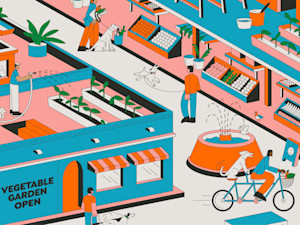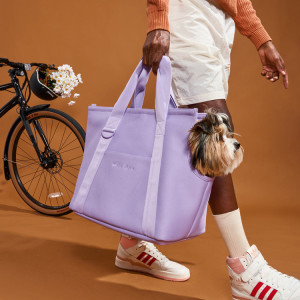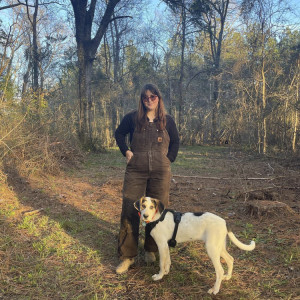3 Ways to Make Sure Your Pet Food Packaging Actually Gets Recycled
With the help of innovative waste-management company TerraCycle, it’s easier than you think.

Share Article
Your pet seems to go through food faster than any human being in your house. You’re constantly rinsing out cans or packaging, hoping to at least be able to throw them into the recycling bin to have second lives as... well, probably another can. At least you’re doing your part, but there’s more to know about what you actually can put in that blue bin for the recycling center and what unfortunately can’t.
While cans of pet food can usually be recycled, recycling pet food bags is a little trickier. Their hefty material falls somewhere between plastic and metal, leading many pet parents to do the confused shuffle between the trash and recycling bins every time they have an empty one. Unfortunately, these bags belong in the trash can more often than not. Since most of them are made from a few layers of material (usually some combination of aluminum and plastic), they tend to be too expensive for local recyclers to process.
“Each layer of a multilayer package would have to be separated and recycled individually for maximum recovery. For curbside recycling programs, this is often inefficient and costly,” explains Mary Ellen Dowd, a communications associate at TerraCycleopens in new tab, an innovative waste management company.
TerraCycle has a mission to “eliminate the idea of waste” by creating recycling solutions for previously non-recyclable items; your cat or dog’s favorite dry food included. By partnering with global leaders, businesses, communities, and individuals, they’ve overcome the financial barriers and managed to give over 527,000 pounds of pet food packaging a second life as park benches, picnic tables, playgrounds, and more.

Here are a few ways to recycle pet food bags:
1. Brand-supported recycling
Depending on the type of pet food you buy, you may actually be able to ship your empties to TerraCycle for free. The company has partnered with the following brands on send-in programs.
Simply sign up on the brand’s page and you’ll be able to place your clean-and-dried containers in either any box you have laying around or a pre-paid bag that they send to you. Both options come with pre-paid shipping labels. Once you send your packaging back to Terracycle, they’ll be able to break it down to be reused.
Royal Caninopens in new tab (dog and cat food)
A Pup Aboveopens in new tab (dog food)
“I And Love And You”opens in new tab (dog and cat food)
Nulo® Challenger™opens in new tab (dog food)
Open Farm®opens in new tab (dog and cat food)
2. Drop-off
Dog and cat food companies Earthborn Holisticopens in new tab and Wellness®opens in new tab have synched up with TerraCycle to establish public dropoff points for their packaging. Look at the map on these brand pages to find a drop-off near you. (It’ll likely be a pet food or supply store.)
3. Zero-waste box
If you don’t buy from companies with an established relationship with TerraCycle, you can still send in your empties to be recycled — you’ll just have to pay for it. Once you buy a Pet Food Packaging Zero Waste Boxopens in new tab, you can fill it with any clean pet food bag, box, or container you want to recycle. Though these boxes aren’t cheap (the smallest size is $110), you can share the cost with friends, neighbors, or co-workers.
“A great thing with zero-waste boxes is that it doesn’t have to be just an individual collecting,” Dowd notes. Your pet-friendly apartment building, office, or school could all go in on a box together, for example. Once your box is full, bring it to a UPS shipping location and pat yourself on the back for helping your community avoid tons of trash.
When it comes to pet food packaging, “wishcycling” — aka throwing it in the recycling bin and hoping for the best — usually isn’t the answer. Instead, look into programs like TerraCycle that take the guesswork out of it and ensure your pet’s dinnertime stays a low-waste affair.

Emma Loewe
Emma is a writer, editor, and environmentalist based in New York City. She is the senior sustainability editor at MindBodyGreen, the author of Return To Nature: The New Science of How Natural Landscapes Restore Us (April 2022), and the co-author of The Spirit Almanac: A Modern Guide To Ancient Self-Care. Her writing has appeared in Grist, National Geographic, Civil Eats, and Outside Magazine, among others. While she doesn’t have any pets of her own, she is a loving dog aunt to Pip the pup.
Related articles
![petaluma sustainable pet food the wildest mars]()
The Sustainable Pet Food Movement is Fired Up
From cricket kibble to miso mice, leading brands are exploring how sustainable pet food products can reduce carbon paw prints.
![A man carrying a dog in a purple dog carrier tote.]()
The Coolest Pet Gear Made From Recycled Materials
Seven brands transforming ocean-bound water bottles into well-designed dog accessories.
![A woman in the woods with her dog.]()
Estelle Lemmler and Hank Are Blissfully Living off the Land
The fashion designer turned sustainable farmer on trading city for country life, adopting a working dog, and harvesting farm-to-table treats.
![Three eco-friendly pet grooming products displayed in a collage.]()
11 Eco-Friendly Pet Grooming Products
Package-free brushes, plant-based wipes, certified-organic shampoos, and more.
![woman holding beautiful cat]()
3 Sustainability Reasons to Adopt Your Next Pet From a Shelter
If your New Year’s resolution is to go green, consider animal rescue.





